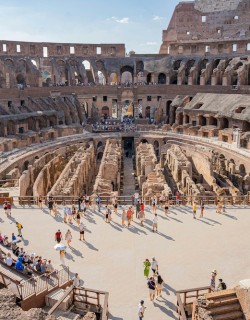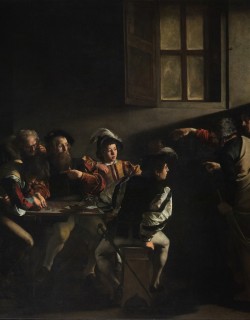From heavyweights in the Vatican Museums like the Laocoon and Apollo Belvedere to the Dying Gaul and Capitoline Venus in the Capitoline Museums, Rome boasts a selection of extraordinary antique statuary that is perhaps unequalled anywhere in the world. But with so many world-famous statues on show, it can be easy to miss out on some hidden gems. Look beyond the highlights and you’ll soon discover that the city is overflowing with an array of wonderful lesser-known sculptures from the ancient world. This week on our blog we’re taking a look at seven fascinating sculptures that won’t feature at the top of most travellers’ Roman intineraries - have a look, and make sure to look out for these ancient stunners on your trip to Rome!
1. The Galatean Suicide
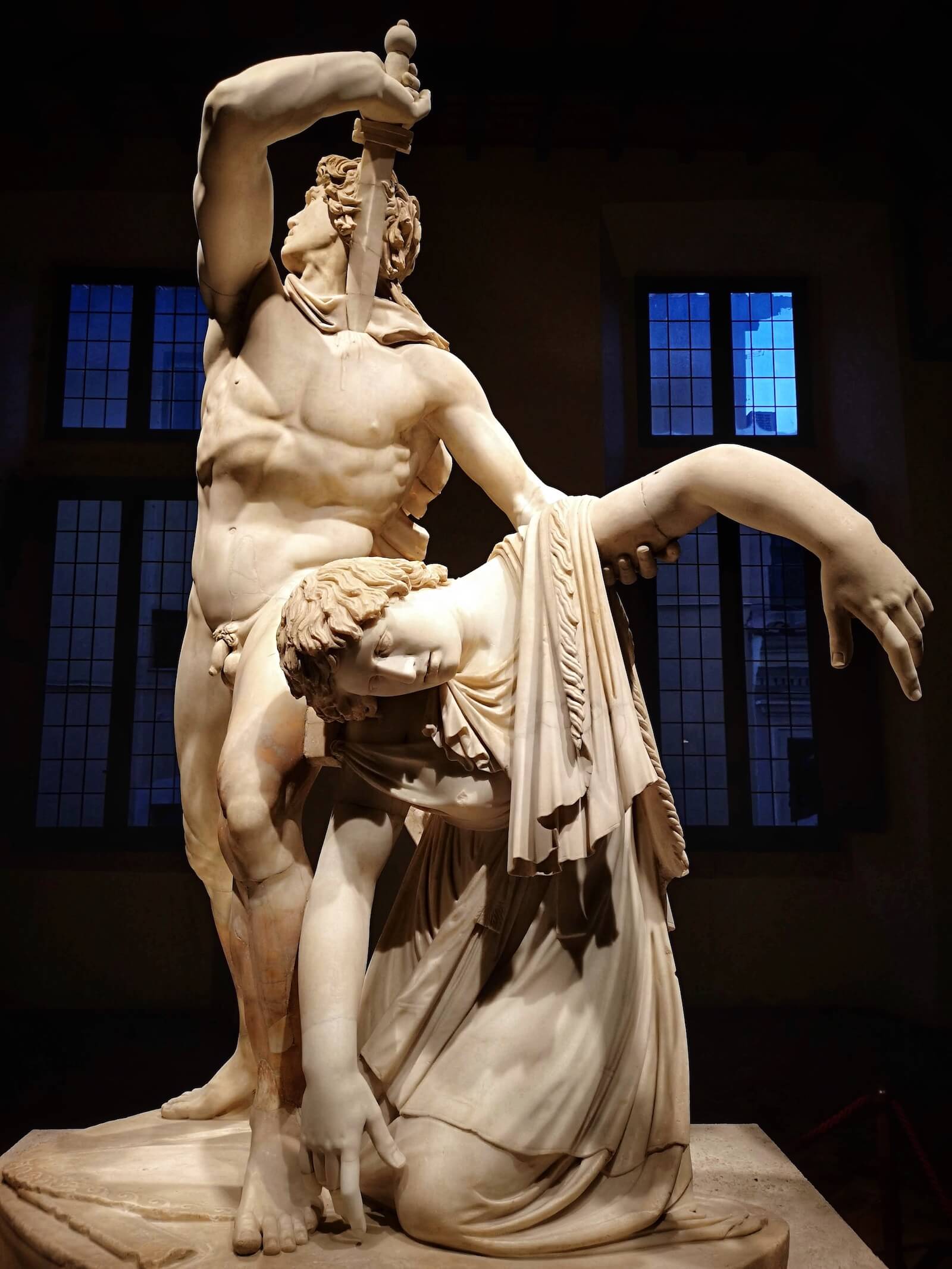
A drama of death in stone: The wonderful Galatian Suicide is one of the most dramatic sculptures of the ancient world. But you won’t have to battle the crowds to get up and close to it - the beautiful statue holds pride of place in the little-visited Palazzo Altemps, just across the road from Piazza Navona. In this ancient Roman copy of a Hellenistic bronze, a defeated Celtic warrior is caught in the act of taking his own life, plunging a sword deep into his own breast as he stares into the distance.
The realism is incredible - look for the blood streaming from the open wound and down his muscular naked torso. The Gallic soldier supports his dying wife, whom he has killed to stop her from being taken into slavery by his enemies. The original statue was actually a celebration, commissioned by the Greek king Attalus to mark his victory over the unruly Galatians. Ever since being rediscovered in 1623 it has been considered one of the landmarks of ancient sculpture - so be sure to make a detour into the beautifully tranquil Palazzo Altemps!
Where to Find it: Palazzo Altemps
2. The Sarcophagus of the Spouses

One of the greatest artistic treasures of the Etruscan civilization that dominated central Italy before the rise of ancient Rome, the extraordinary terracotta Sarcophagus of the Spouses depicts a couple reclining on a kind of bed known as a kline, ready for a banquet. The muscular man has his right arm around the shoulder of his wife in a beautifully tender gesture, and the two smile genially out at us - the image of a happy couple. Compared to other near-contemporary civilisations in antiquity like the Greeks and Romans, Etruscan society was characterised by a much greater sense of equality between the sexes, something demonstrated in the prominence accorded to females - typically presented as equals rather than subordinates to their spouses - in Etruscan funerary art. Look out for the fabulously braided hairstyles sported by the husband and wife.
Banqueting scenes were very common in Etruscan art; as with the ancient Greeks, such subject matter was intended to convey plenitude, wealth and culture, and regularly featured in funerary monuments - sending the deceased off to the afterlife in the best possible fashion. Originally the sculpture would have been painted in vibrant colours, adding to the festive display.
Where to Find it: National Etruscan Museum, Villa Giulia
3. The Boxer at Rest
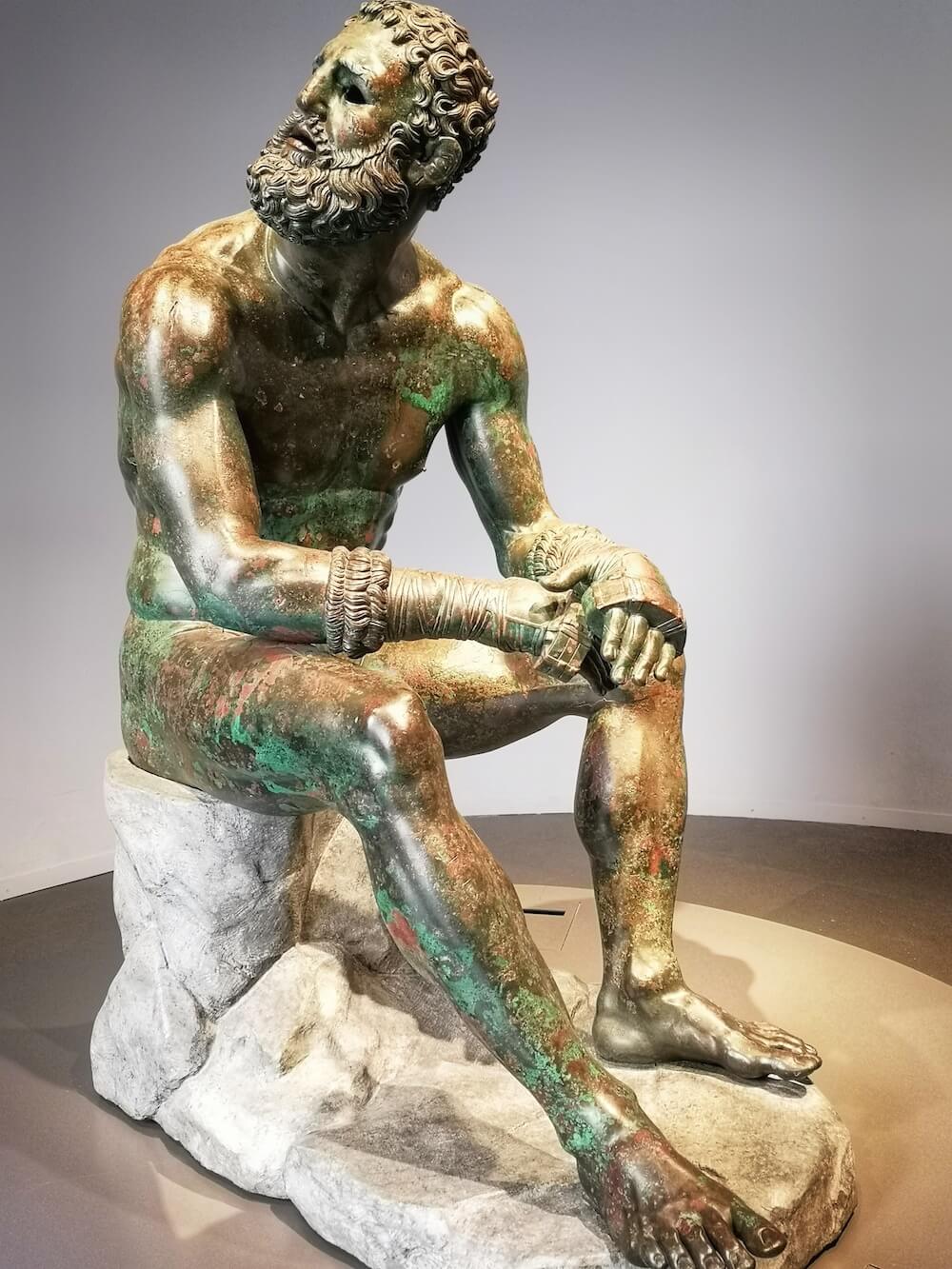
Bruised but unbowed, the boxer is finally at rest, wreathed in a pensive calm. But the brutality he has just gone through is written into the features of his weary haunted face and battered body. This ancient bronze from the Hellenistic period is surely one of the most powerful portrayals of humanity ever carved, an absolute masterpiece of the classical world. The details are incredible - his perfectly sculpted muscles are the natural tools of his trade, whilst the nasty looking bruises picked out in deliberate purple discolourations of the metal are the profession's grim consequences.
Ancient pugilism was a nasty business - the leather straps wrapped around his hands known as himantes were the only protection the boxers had, and the tough oxhide could lacerate an opponent's flesh with every blow. Find the Boxer in Palazzo Massimo alle Terme, part of the national museum of Rome (Museo Nazionale Romano) just across from Termini station. Despite being chock-full of masterpieces from the ancient world the museum is not well known by tourists, so you won't have to battle the crowds to get up close and personal with the Boxer.
Where to Find it: Palazzo Massimo
4. The Borghese Hermaphrodite
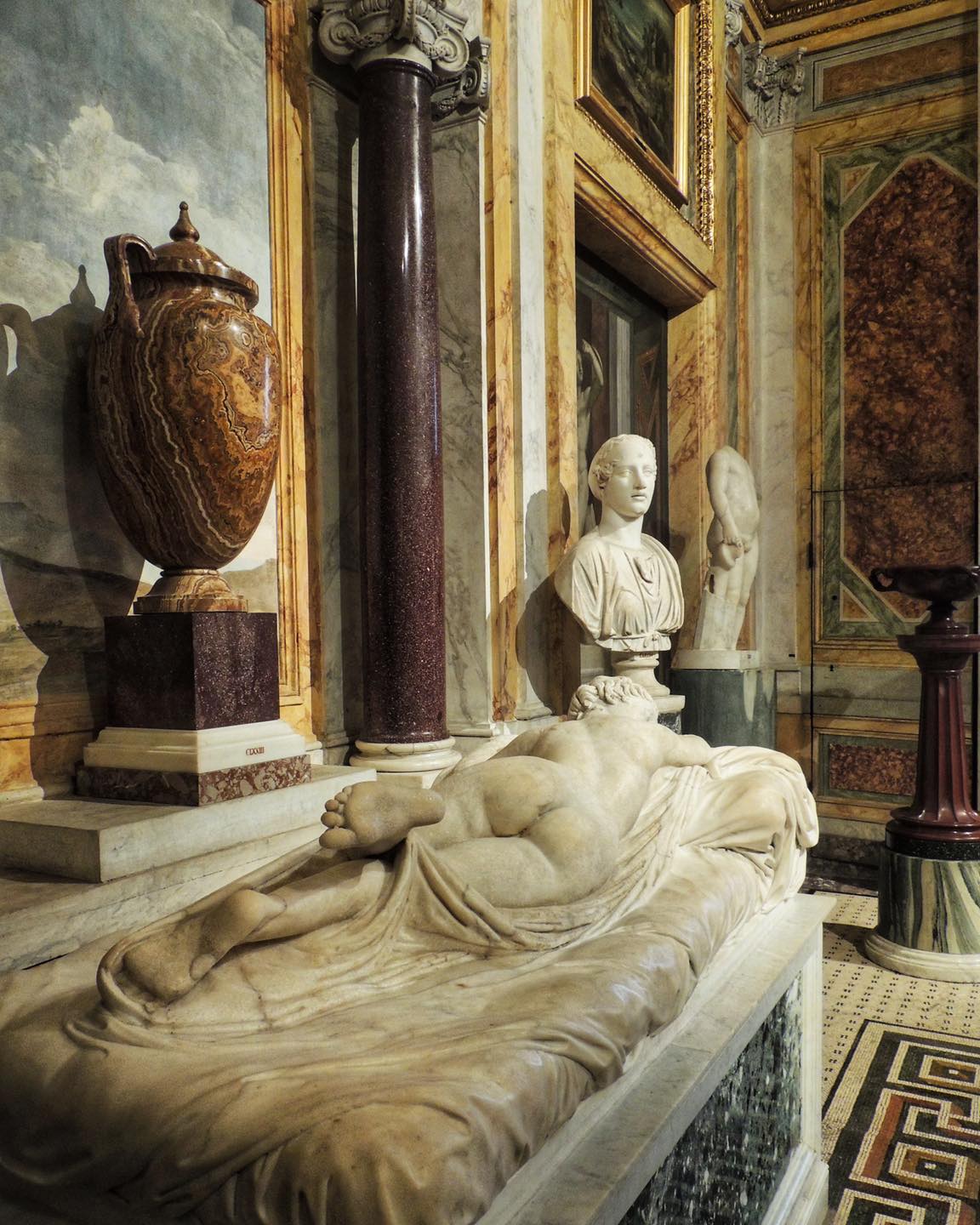
Viewed from the rear, this ancient marble statue appears to represent a nude woman in the depths of sleep; walk around the front, however, and you’ll find a little… surprise. With both male and female attributes, it may seem a peculiar subject for a Greco-Roman statue, but this figure actually comes straight from classical mythology.
Hermaphroditus, as his name suggests, was the son of Hermes and Aphrodite. A handsome youth, he attracted the attention of a water nymph, who fell so deeply in love that she prayed to the gods that the two would never be separated. Her wish was granted, and the gods combined their bodies into one androgynous form.
The Sleeping Hermaphrodite has long fascinated viewers, out of both love for its beauty and curiosity regarding its unusual form. The ancient Romans were big fans,and over a dozen Roman copies of the original lost Greek bronze survive in galleries across the world, attesting to the sensuous allure of the original statue. One of the finest is that of the Borghese Gallery: found on the building site of a church, the sculpture was donated to the art-obsessed cardinal Scipione Borghese, who drafted in the services of Gianlorenzo Bernini to sculpt a bed for the figure.
The sculpture was carted off to the Louvre in the wake of French occupation of Rome in the 19th century, and the statue that we see in the Borghese today is in fact another version of the same subject, unearthed in Rome in 1781. You can see the Sleeping Hermaphrodite on a tour of the Borghese Gallery in Rome.
Where to Find it: The Borghese Gallery
5. Silenus with the Infant Dionysus
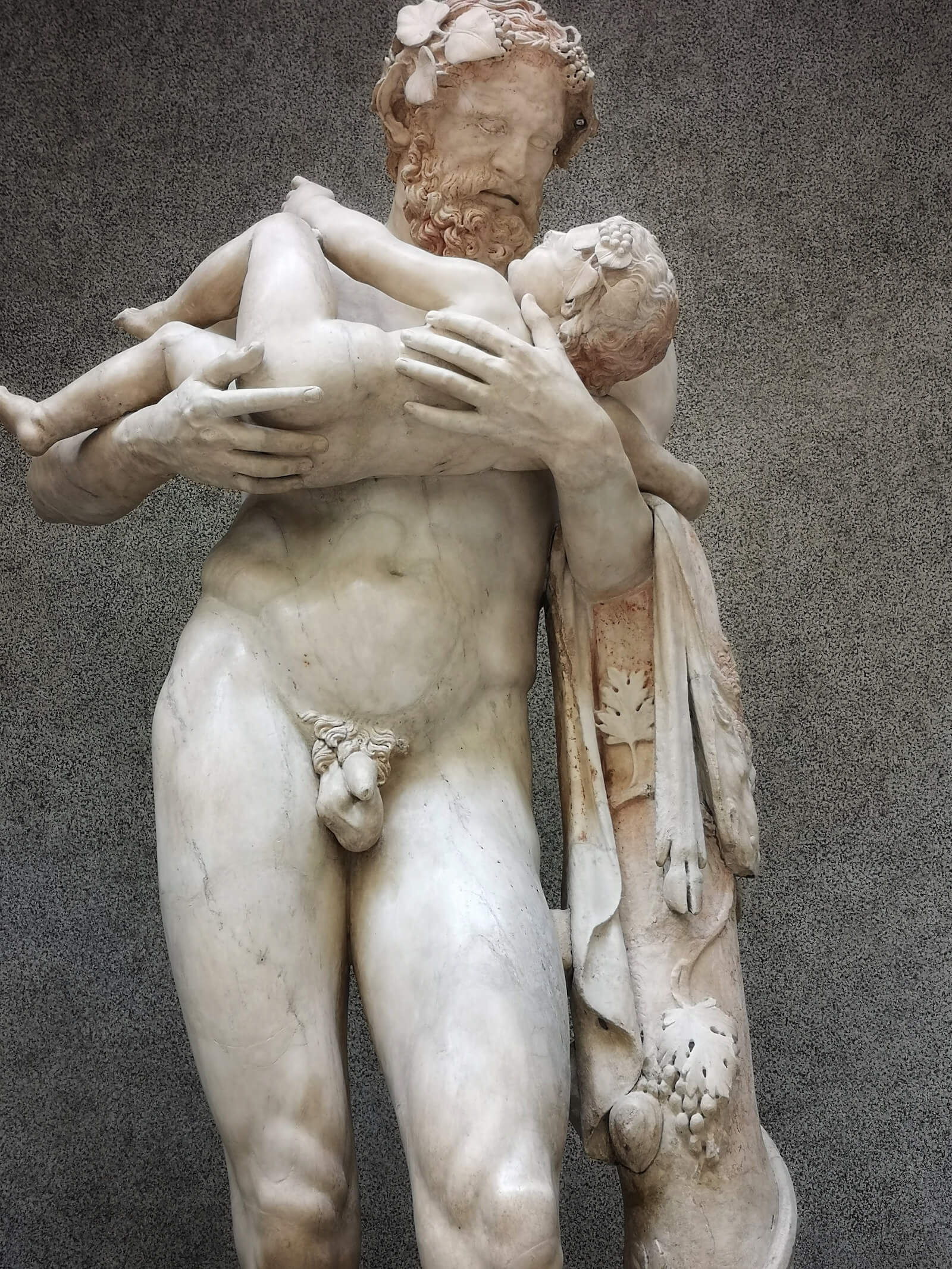
Families were complicated to say the least amongst the ancient gods. The horny deities were pretty much always at it, whether amongst themselves or whether seducing mortals on earth in all sorts of outlandish guises, leading to some seriously wacky family trees. Whilst most ancient sources agree that Bacchus, god of wine, was the son of Zeus, head-honcho on Mount Olympus, his maternal line was more contested - some argued for Demeter, others for Proserpine and still others for Semele. One way or another, Zeus soon lost interest in raising the little one, and tasked the cheery satyr and school-master Silenus to take on the role of Bacchus’ foster parent.
Whilst the two weren’t blood relations, their bond was water-tight, as demonstrated in this criminally under-appreciated representation of the two in the Vatican Museums - a 2nd century Roman copy of a Greek original by the sculptor Lysippos - which must rank up there with the most tender depictions of paternal affection ever carved.
Silenus was widely known for his wisdom, and seemed a good choice to take the young god in hand. The only problem was that Silenus was also an inveterate drunkard, and spent much of his days sozzled. The intellectual satyr naturally wasted little time in nurturing in his young charge a love for all the finer things in life, and was so successful that Dionysus would in turn grow up to become the god of wine, ritual frenzy and partying down. If only we all had such a father figure! Look out for Silenus on a visit to the Vatican Museums.
Where to Find It: Braccio Nuovo, Vatican Museums
6. The Portonaccio Sarcophagus
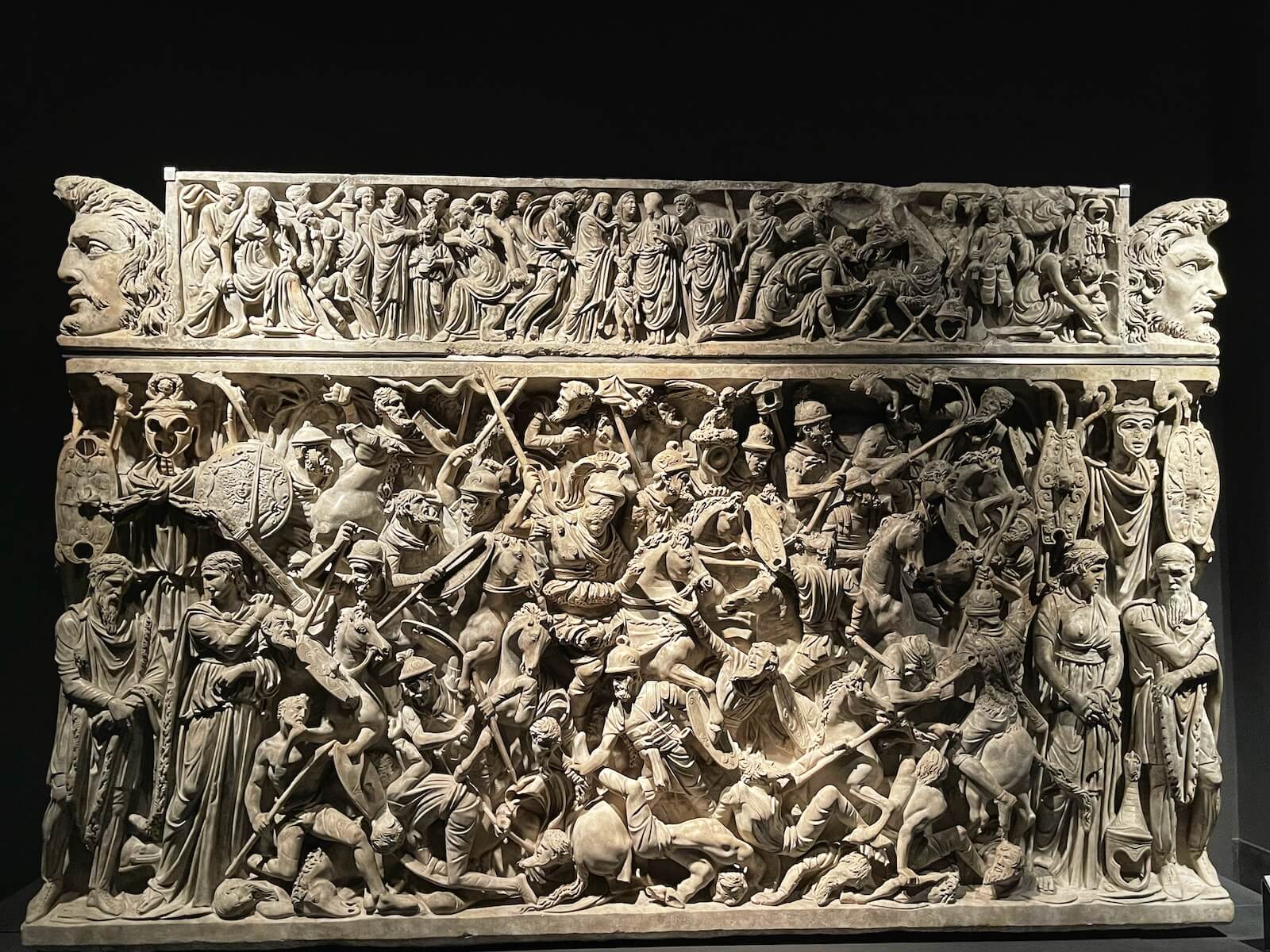
This dizzyingly complex Roman sarcophagus showcases the extraordinary skills possessed by ancient sculptors in the art of relief carving. The subject is one dear to the bellicose Roman spirit: a battle scene seen through the eyes of a Roman cavalryman who makes his way through the war and bloodshed in the guise of a universal victor.
So elaborate is the composition, characterised by dramatic chiaroscuro contrasts thanks to the depth of the relief carving, that it can be difficult to make out exactly what’s going on. But the more closely you look the more you realise that the elite horsemen of the Roman legions are raining down terrible destruction on the hopelessly outmatched barbarian hordes with whom they are in conflict. Devastating blows of spears, swords and lances rain down on the hapless foe: the Roman soldiers, clad in armour and sporting magnificent shields, fully live up to their reputation as the ancient world’s most fearsome and efficient warriors.
On the sides of the sarcophagus, carved in much lower relief, we see the aftermath of the battle. The barbarian warriors are defeated and taken captive, whilst the tribal chiefs submit to the authority of Rome. The conflict depicted is part of the Germanic wars against the Marcomanni people undertaken during the reign of Marcus Aurelius between 172-175 AD, and the illustrious deceased general buried in the sarcophagus was likely Aulus Iulius Pompilius, one of the emperor’s chief cavalry commanders.
Look at the lid of the sarcophagus and you’ll see an altogether more peaceful scene featuring the general holding hands with his wife in a formal gesture known as the dextrarum iunctio. Flanking this are scenes of the woman exercising her moral worth by educating the couple’s children as well as a scene of the general showing mercy towards his defeated foes.
Where to Find it: Palazzo Massimo
7. The Togato Barberini
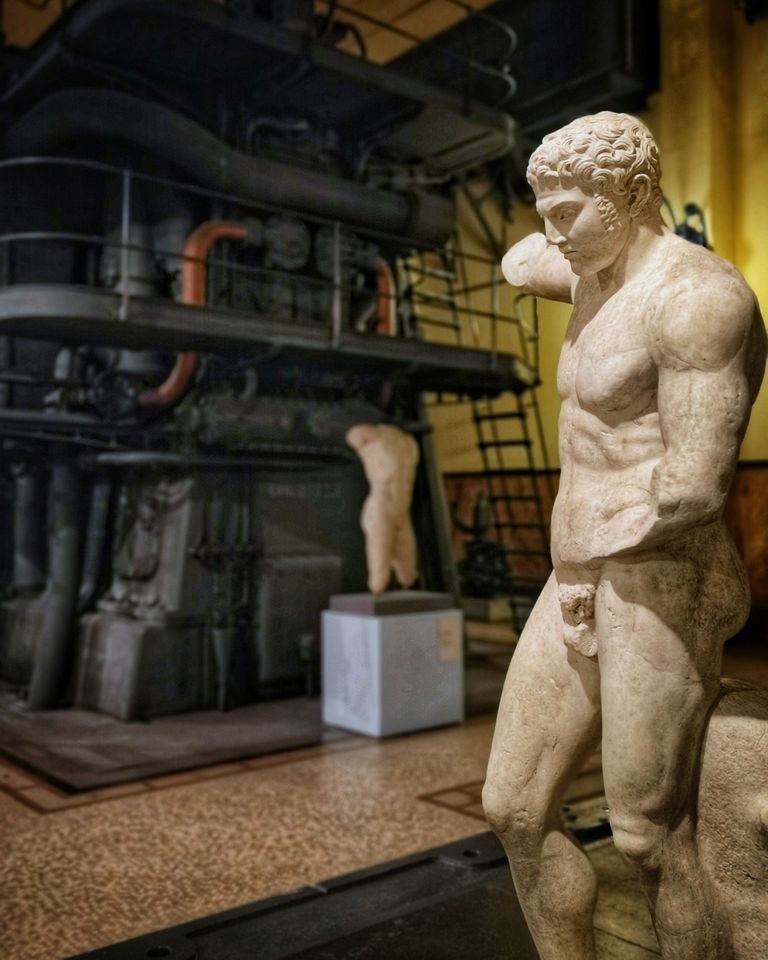
The Centrale Montemartini might be Rome's most fascinating museum. A former power station that first opened in 1912 in industrial Ostiense, the venerable plant on the banks of the Tiber fed Rome's voracious appetite for energy through the postwar boom years before time caught up with it and the furnaces were quenched for good in 1963.
Fast forward to the 1990s, and the Capitoline Museums had the brilliant idea of repurposing the space as a home for many of its fabulous sculptures that were left languishing in the vaults. The idea was a hit, and nearly 30 years later its stunning combination of industrial machinery and pearly white ancient Roman statuary makes it one of our favourite spots in Rome.
All of the sculptures here are worth your attention, but look out particularly for the Togato Barberini, in which a Roman patrician holds in his hands the heads of two illustrious deceased relatives. Little beyond that is known about the sculpture. For some, the figure depicted is Lucius Junius Brutus, holding the heads of his sons, who he had condemned to death for treason; according to others it’s Julius Caesar. It seems more likely that he is instead an unknown senator of high rank, demonstrating his good family name by paying honour to his ancestors.
Where to Find it: Centrale Montemartini
We hope you enjoyed our list of some of our favourite off-the-beaten-path ancient sculptures in Rome! Through Eternity Tours offer guided itineraries to most of the sites featured in this guide, including the Vatican Museums, the Borghese Gallery and the Capitoline Museums. Check out our full range of guided tours in Rome here!

